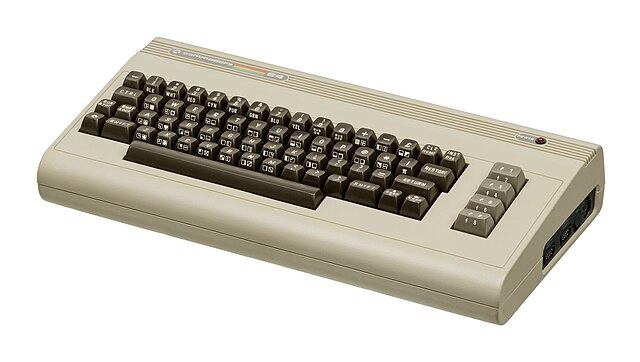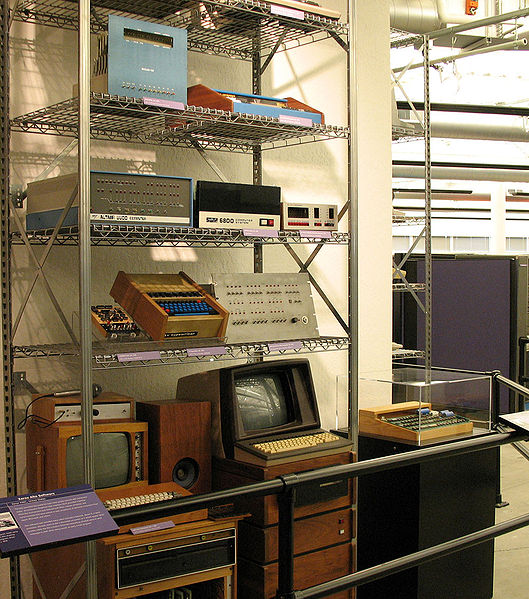Ohio Scientific, Inc., was a privately owned American computer company based in Ohio that built and marketed computer systems, expansions, and software from 1975 to 1986. Their best-known products were the Challenger series of microcomputers and Superboard single-board computers. The company was the first to market microcomputers with hard disk drives in 1977.
Co-founders Mike and Charity Cheiky pictured in 1978 with a Challenger 2P
Challenger IIP, with optional dual floppy drive unit
Superboard II residing inside a homemade wooden case
Challenger 4P
A microcomputer is a small, relatively inexpensive computer having a central processing unit (CPU) made out of a microprocessor. The computer also includes memory and input/output (I/O) circuitry together mounted on a printed circuit board (PCB). Microcomputers became popular in the 1970s and 1980s with the advent of increasingly powerful microprocessors. The predecessors to these computers, mainframes and minicomputers, were comparatively much larger and more expensive. Many microcomputers are also personal computers. An early use of the term "personal computer" in 1962 predates microprocessor-based designs. (See "Personal Computer: Computers at Companies" reference below). A "microcomputer" used as an embedded control system may have no human-readable input and output devices. "Personal computer" may be used generically or may denote an IBM PC compatible machine.

The Commodore 64 was one of the most popular microcomputers of its era, and is the best-selling model of home computers of all time.
Raspberry Pi, a popular modern-class microcomputer
Three microcomputer systems frequently associated with the first wave of commercially successful 8-bit home computers: The Commodore PET 2001, the Apple II, and the TRS-80 Model 1
A collection of early microcomputers, including a Processor Technology SOL-20 (top shelf, right), an MITS Altair 8800 (second shelf, left), a TV Typewriter (third shelf, center), and an Apple I in the case at far right








